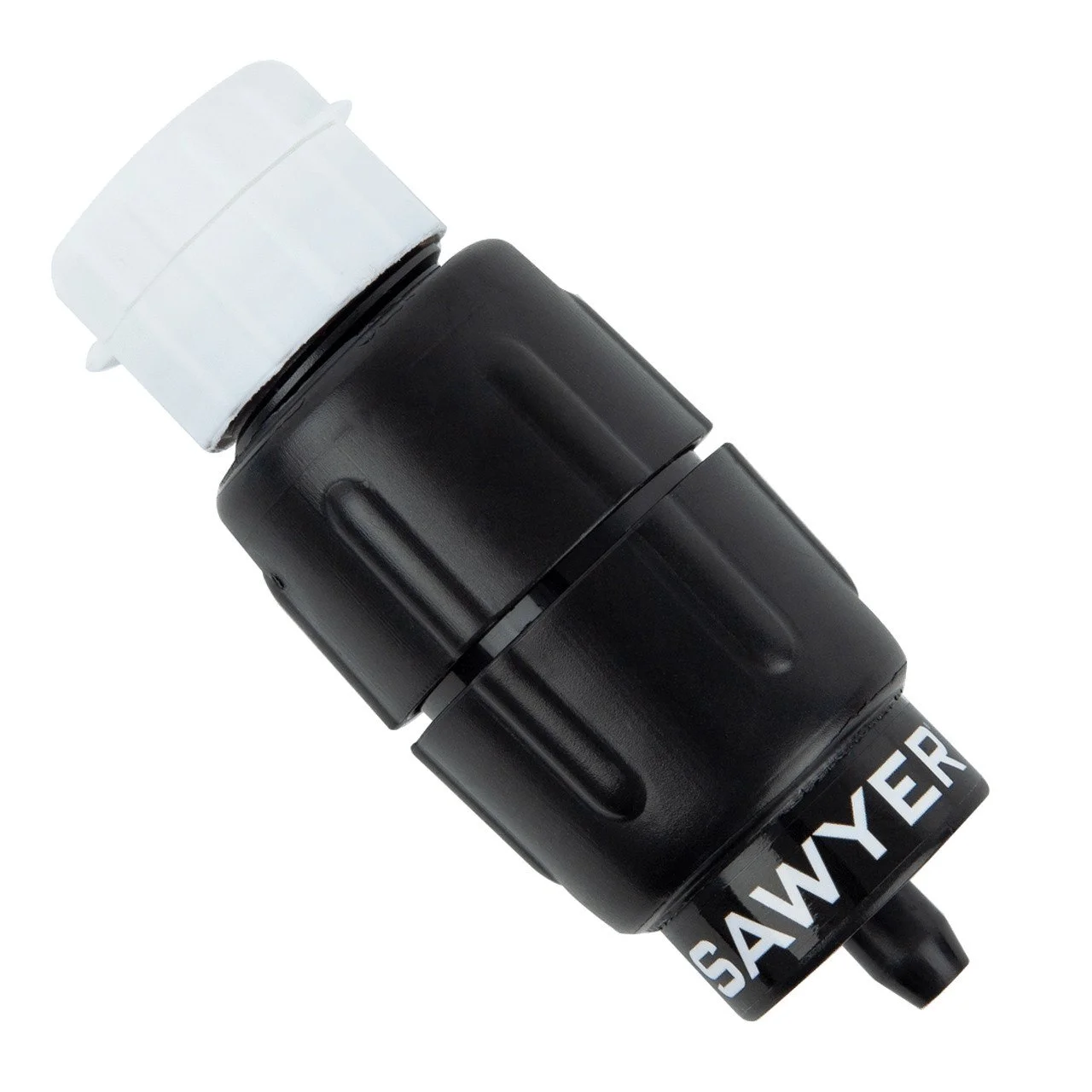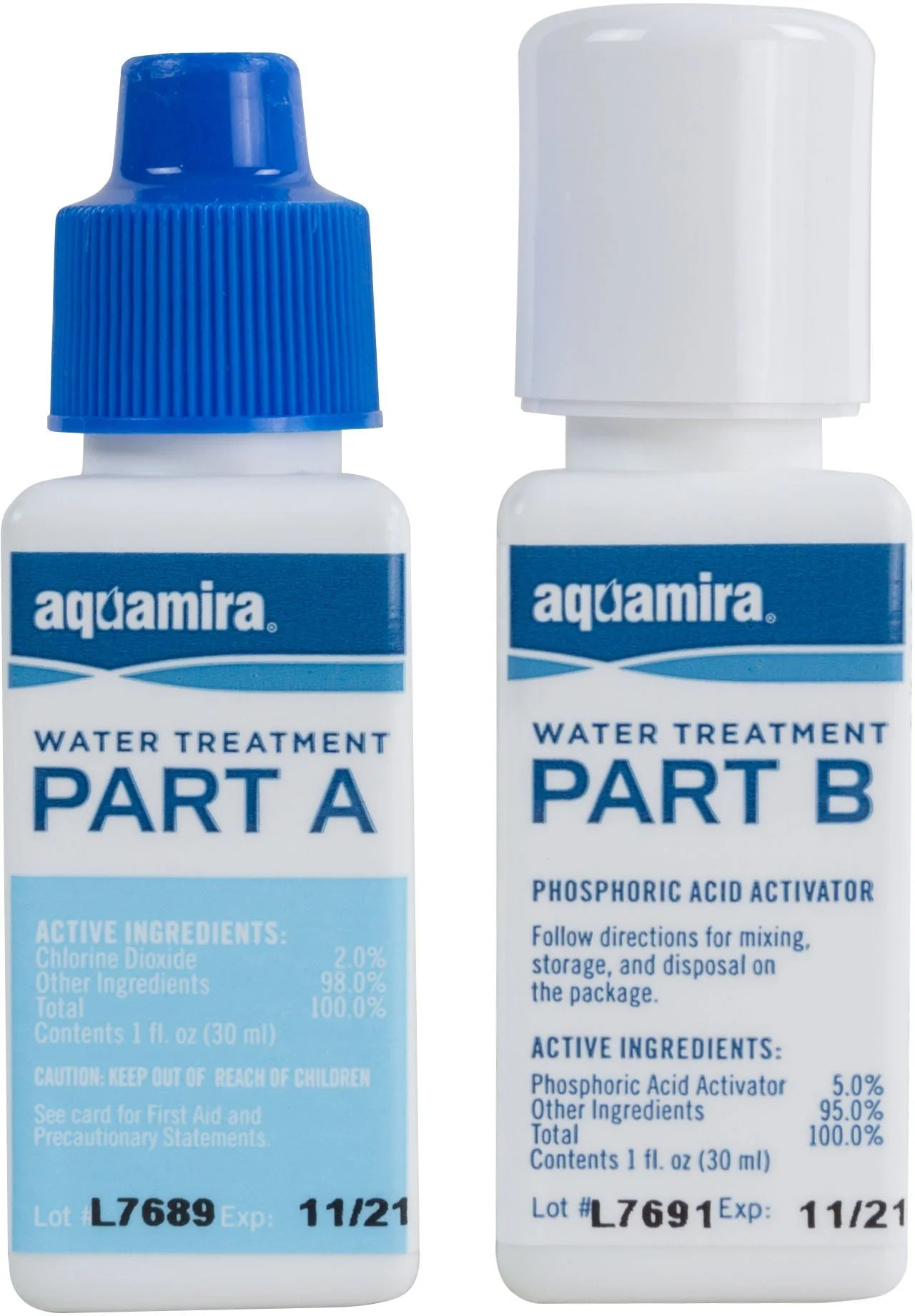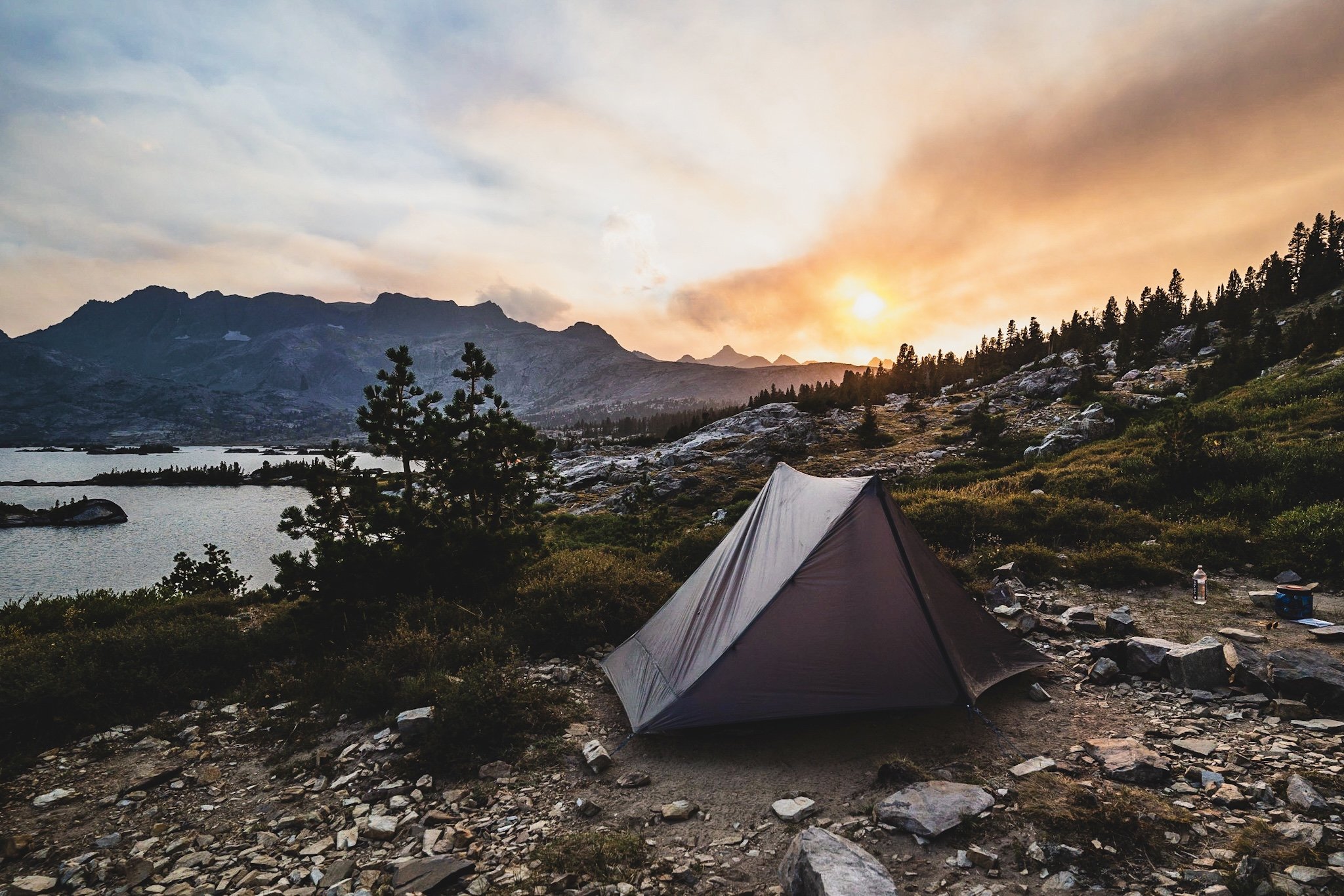The Best Water Filters and Purifier for Hiking, Backpacking, and Thru-Hiking
If you're heading out for a backpacking, hiking, or thru-hiking adventure, filtering or purifying your water is essential to avoid illness. No one wants to get sick in the backcountry! Filtering and/or purifying your water while backpacking is crucial because it removes harmful bacteria, parasites, and other contaminants from natural water sources, which can cause serious illness.
I’ve thru-hiked and backpacked over 6,500 miles, and on every trip, I always carry both a water filter and a water purification method. For my water filter, I use one of the following: Sawyer Squeeze Water Filter, Sawyer Micro Squeeze Water Filter, or the Katadyn BeFree Water Filter Bottle. For my water purification method, I always take Aquamira Water Treatment.
I have never gotten sick from my water while backpacking or thru-hiking because I always use a water filter or purify my water.
Pro Tip: make sure to clean or sanitize your hands after scooping water from a source, as just touching your hands to your face or food after they’ve touched dirty water could potentially make you sick.
Here’s an overview of the three water filtration and purification methods I rely on, including their pros/cons and the scenarios where I use each:
Disclaimer: This blog post contains affiliate links, meaning I receive a small percentage of every purchase at no additional cost to you. Read more about my affiliate policy here.
1. Sawyer Squeeze and Micro Squeeze Water Filters
This has been my go-to water filter for backpacking and thru-hiking for the past several years. It's available in two sizes:
Sawyer Squeeze (larger, 3.0 oz): Faster flow rate but heavier.
Sawyer Micro Squeeze (smaller, 2.5 oz): Slower flow rate, but lighter (this is the one I typically use since I aim to keep my baseweight as low as possible).
Although Sawyer also makes the Sawyer Mini Water Filter, I don’t recommend it due to its slow flow rate, quicker clogging, and fragile build. My partner’s Mini broke in half after just a week of use when he was twisting it onto his water bottle.
The Sawyer Squeeze and Micro Squeeze twist on to most standard disposable plastic water bottles with a 28mm thread, such as the Smartwater bottle, making it a favorite for thru-hikers. The convenience of filtering directly from your water bottle without needing an extra water container is super convenient on long distance hikes. These are my go-to water filters for hikes with less than ideal water sources, as they effectively filter out particulates like dirt and “floaties” (dead bugs, etc.). I prefer using them when the water isn’t flowing clearly or contains debris like bugs, grass, or dirt. Plus, you can backflush the filter to maintain the flow rate.
I typically use the Sawyer Micro Squeeze for my thru-hikes, including the John Muir Trail, Pacific Crest Trail, Arizona Trail, and Continental Divide Trail. I choose the Sawyer Micro Squeeze over the larger Sawyer Squeeze because I’m very weight-conscious about my backpacking gear and try to keep my base weight low. While the Micro Squeeze has a slower flow rate, it helps keep my pack lighter.
Sawyer Squeeze on water bottle in my left backpack side pocket
Sawyer Micro Squeeze Water Filter on my water bottle in my backpack side pocket
Scenarios I Use the Sawyer Squeeze/Micro Squeeze Water Filter:
This is my go-to filter for long thru-hikes or backpacking trips where water sources may be stagnant or unreliable. It doesn't clog as quickly as other filters, making it ideal when I’m unsure if the water will be clear and flowing.
Pros:
Can be backflushed to improve flow if it gets clogged, so you don’t have to buy a new filter as often.
Filters out particulates (gunk such as bugs, dirt, etc.).
Versatile threading fits on various water bottles and water bags.
Cons:
Flow rate slows over time (though backflushing can help).
O-ring can pop out if tightened too much, causing leaks.
Can freeze in cold temperatures, so it needs to be kept warm, typically by sleeping with it in your sleeping bag/quilt in sub-freezing conditions or hiking with it in your pocket. If your water filter freezes, the expanding water can damage it, causing it to stop filtering effectively.
Must keep the clean end of the filter from getting dirty or it could become contaminated (e.g., by accidentally dropping the entire filter into a dirty water source).
2. Katadyn BeFree Water Filter Bottle
The Katadyn BeFree Water Filter Bottle (2.3 oz) is probably my favorite water filter, but it's best used in certain conditions. It works great with clear, flowing water, but tends to clog quickly when used with muddy or dirty water that has a lot of "floaties." It's fast and easy to use when the water is clear. Plus, the 1L filter bottle is perfect for extra water capacity when needed.
I’ve used the Katadyn BeFree water filter a lot in Washington State, including my Wonderland Trail thru-hike. If you are hiking in an area with clear, flowing water, this filter is fantastic.
Scenarios I Use the Katadyn BeFree Water Filter Bottle:
The Katadyn BeFree is my go-to water filter for one-night to week-long backpacking trips in areas with clear, flowing water, like Washington State and Colorado. I used this water filter on my 2024 Wonderland Trail thru-hike and for all of my overnight trips this past summer in Washington. It's perfect for areas with clean, running water, but I avoid using it in muddy ponds or standing water with a lot of “floaties”, like cow tanks, as it clogs quickly in those conditions.
Pros:
Filters fast when the water is clear.
Easy to use.
Filters out particulates (gunk such as bugs, dirt, etc.).
Can get just a replacement filter if your filter bottle is still in good shape.
1L filter bottle is great for extra water capacity, if needed.
Filter bottle stashes away easily.
Cons:
Clogs quickly if water has a lot of gunk in it.
Filter bottle is prone to punctures/getting holes.
Only works with specific bottle threads (it has a 42mm thread), so it won't fit on most standard disposable plastic water bottles. If the filter bottle breaks, you'll have no way to filter water since the threading isn't versatile.
Can freeze in cold temperatures, so it needs to be kept warm, typically by sleeping with it in your sleeping bag/quilt in sub-freezing conditions or hiking with it in your pocket. If your water filter freezes, the expanding water can damage it, causing it to stop filtering effectively.
No backflush system for cleaning.
Must keep the clean end of the filter from getting dirty or it could become contaminated (e.g., by accidentally dropping the entire filter into a dirty water source).
3. Aquamira Water Treatment
When I’m thru-hiking or backpacking, Aquamira Water Treatment is always my go-to water purification method. Unlike traditional filters, Aquamira uses chlorine dioxide to kill bacteria, viruses, and cysts without the iodine taste or discoloration that can occur with other water purification methods.
I love Aquamira for its convenience—it doesn't require stopping to filter my water, allowing me to keep hiking while it purifies my water. For fast-paced hikes, it’s perfect. However, it does require a bit of planning, as it takes about 5 minutes for the chemicals to mix and at least 15 minutes to purify the water, so I make sure I have extra water on hand while waiting for my water to purify.
Aquamira is effective in all water conditions, from clear to murky, warm to cold. The drops come in two parts (A and B), which mix together to purify over 99.9% of bacteria, viruses, and cysts, including giardia and norovirus. I like that Aquamira doesn’t have iodine, which means it also doesn’t have the unpleasant iodine taste or discoloration. Aquamira is small and lightweight, making it perfect for backpacking. Plus, it’s a great backup option if my main water filter breaks or freezes. One of the biggest advantages is that it kills viruses, something most water filters can’t do.
Scenarios I Use Aquamira Water Treatment:
I use only Aquamira (and not also a water filter) when the water is flowing well, clear, and free of “floaties” (debris like dead bugs, mud, or dirt).
If the water source is extra gross (think dead animals in the water), then I will first filter the water through a Sawyer Squeeze or Sawyer Micro Squeeze, and then use Aquamira to also purify the water.
I primarily use Aquamira when I need to keep hiking fast and stay on the move without stopping to filter, especially during my long thru-hikes of the Pacific Crest Trail, Arizona Trail, and Continental Divide Trail, where I was trying to finish the trails within a specific timeframe or under a certain number of days.
Pros:
Kills viruses, including norovirus, which filters don’t.
Doesn’t break from freezing like water filters do.
Lightweight and compact with a long shelf life.
Cons:
It takes at least 20 minutes to purify water: 5 minutes for mixing the A and B chemicals, and 15 minutes for the reaction.
Doesn’t filter out particulates/”floaties”, so you may need a bandana or water filter for that.
Doesn’t provide immediate access to drinkable water, so plan ahead!
Takes longer to purify cold water (at least 30 minutes) because the chemical reaction slows down in colder temperatures.
Final Thoughts on Water Filters & Water Purification for Hiking, Backpacking, and Thru-Hiking
Having an appropriate water filtering and purifying system is crucial when hiking, backpacking, and thru-hiking to make sure you stay healthy on your hike. I mentioned this earlier and I’ll say it again: I have never gotten sick from my water when backpacking or thru-hiking because I always filter my water using either a Sawyer Squeeze/Micro Squeeze or a Katadyn BeFree, or I purify it using Aquamira.
Here’s a quick recap of the methods I use and when:
I choose the Sawyer Squeeze or Sawyer Micro Squeeze for longer hikes and thru-hikes with varying or uncertain water sources.
I choose the Katadyn BeFree for backpacking trips when I know the water is clear and flowing.
I always carry Aquamira as a water purification method, which is great especially if you're hiking fast or as a back-up water treatment.
I hope this has helped you figure out which method to use for filtering or purifying your water on your next backcountry adventure! Just remember to always carry a backup method in case your primary water filter fails—whether it’s from freezing, breaking, or clogging.
Pro Tip: make sure to clean or sanitize your hands after scooping water from a source, as simply touching your hands to your face or food after they've come into contact with dirty water could potentially make you sick.
















